BuckleBoy
Platinum Member
- Joined
- Jun 12, 2006
- Messages
- 18,132
- Reaction score
- 9,701
- Golden Thread
- 4
- Location
- Moonlight and Magnolias
- 🥇 Banner finds
- 4
- 🏆 Honorable Mentions:
- 2
- Detector(s) used
- Fisher F75, Whites DualField PI, Fisher 1266-X and Tesoro Silver uMax
- Primary Interest:
- All Treasure Hunting
Hello All,
BuckleDad was in town this weekend, so I took advantage of being able to dig with him. Here's the video:
Here's the video:
We decided to meet up with Shangalang and hit a spot that we had found two years ago when scouting in South Louisiana. We had dug a couple of flat buttons, some musket balls, scrap iron, and very little else. We had hunted the site several times (Shang and I), as well as a four-person hunt with Quindy and Dman before the rows were plowed up. I had always said "I bet there's a coin or a good button to be dug there." I'm sure Shangalangalang probably got upset with me saying that so much, but today was the day that it finally proved true!
So BuckleDad and I and Shang got out there at dawn to do some digging. We were hitting the lead, little brass bits, and one or two flat buttons. Really sparse finds. But we stuck with it, and I kept on with the grid. Then I got a clay pipe stem. Then another. Then I got a nice consistent signal and out flopped a silver coin!
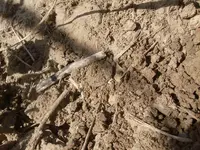
I was convinced it was early, judging from the era of the site (1790-1840). Knowing that Spanish Silver circulated in South Louisiana until the opening of the Orleans mint, and knowing that very little of the earlier Capped coins made their way down from Philadelphia here until well after the Civil War, I strongly felt that this coin had to be an early Seated Dime. It was actually an 1838-O "No Stars" Dime, which would've been in AU condition if not for the nail hole.
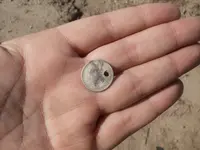
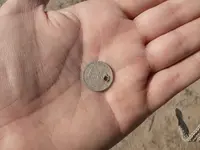
I kept on, and when I got to the turn row, a scalloped edge token appeared in the dirt. I knew it had to be a plantation token. This one is actually unlisted
This one is actually unlisted  I'm only going to show the reverse side of the token to protect the name of the site. But I have wanted a token like this for some time, and wondered if they actually existed or not. Turns out, they do.
I'm only going to show the reverse side of the token to protect the name of the site. But I have wanted a token like this for some time, and wondered if they actually existed or not. Turns out, they do. 
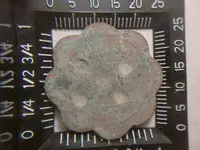
I was hoping BuckleDad or Shang could pick up something special at this point. Dad did get a couple handmade brass nails which are a neat find, and old (ship building, etc.). I did get a flat button that I thought was a small cent at first. Sticking out of the dirt.
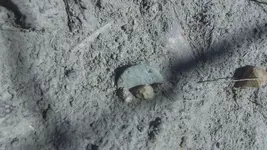
Then right as we broke for lunch, I was finishing up a row, and close to just walking to the end without being thorough, I was so hungry... I got a nice signal and saw what looked like a button in the dirt. Bending over, it was a half real!!! Carolus IIII Tnet boys and girls, I was so excited that I forgot get a photo of the coin in the dirt!
Tnet boys and girls, I was so excited that I forgot get a photo of the coin in the dirt! 
Then we took a break, and back to work at a newer site that we are overdue for a great find from (1830-1860). This site is polluted with can slaw, wheat pennies, and other newer items. Although Shangalang was stoked to find an aluminum play coin from 1949, which was a neat find. BuckleDad and I got back in the field and started digging signals. A little later, Dad came over to me with a nice, large, complete thimble that he had dug. Then a little later he found a large civilian button with a shank and no plow damage. He was beaming, and I was happy for him. Buttons like that in nice condition are hard to find down here!
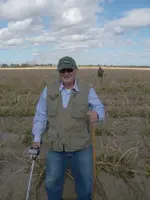
Here's a shot of Shangalang digging, and the backswamp in the distance.
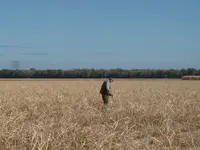
On the next day I went to antique and junk stores with Dad. I saw a thin, really tarnished pocket knife for 10 bucks. When I looked closer, I saw the mark of JA Henckels and in spite of the tarnish, I knew it had to be silver. I talked 'em down to $9.
When I got home, I cleaned the tarnish off the pocketknife and it was indeed a sterling silver casing. Score. Dad didn't see me purchase it, so I gave it to him as a Christmas gift. He as happy--but even more happy when I told him that I paid $9 for it.
Dad didn't see me purchase it, so I gave it to him as a Christmas gift. He as happy--but even more happy when I told him that I paid $9 for it. 
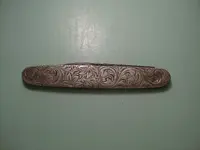
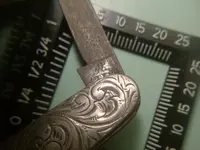
Anyhow, here are BuckleDad and my finds. The two piece civilian "flower" button is backmarked "SCOVILLS & Co SUPERFINE" which is 1840s or so, with the rmdc. The half real is dateless, but I think I can see the top of the last digit as a "2" or perhaps an "8" 1798? 1802? I'd love to know what others see. This is Spanish/Mexican/Peruvian silver #9 for the year for us. Having a slower year in 2014, compared to 19 Spanish dug in 2012 and 27 Spanish dug in 2013, but we've dug some nice finds in 2014 so I'm very pleased so far.
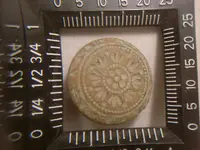
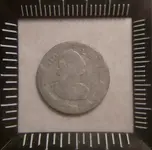
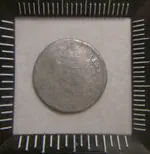
Shame the Seated Dime was holed. Would've been a really nice one for detail. I have dug a couple of these 1838 no stars ones, and I have always thought that they were beautiful and iconic coins. My cleaning method removed most of the fire burned black on the face of the coin seen in the photos from the field.
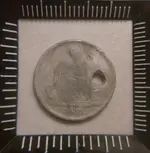
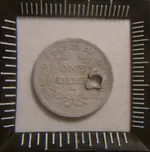
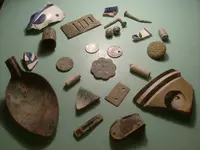
Best Wishes and Happy Hunting from BuckleDad and the CaneField Bandits.
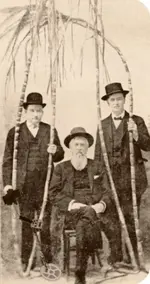
BuckleDad was in town this weekend, so I took advantage of being able to dig with him.
 Here's the video:
Here's the video:We decided to meet up with Shangalang and hit a spot that we had found two years ago when scouting in South Louisiana. We had dug a couple of flat buttons, some musket balls, scrap iron, and very little else. We had hunted the site several times (Shang and I), as well as a four-person hunt with Quindy and Dman before the rows were plowed up. I had always said "I bet there's a coin or a good button to be dug there." I'm sure Shangalangalang probably got upset with me saying that so much, but today was the day that it finally proved true!

So BuckleDad and I and Shang got out there at dawn to do some digging. We were hitting the lead, little brass bits, and one or two flat buttons. Really sparse finds. But we stuck with it, and I kept on with the grid. Then I got a clay pipe stem. Then another. Then I got a nice consistent signal and out flopped a silver coin!

I was convinced it was early, judging from the era of the site (1790-1840). Knowing that Spanish Silver circulated in South Louisiana until the opening of the Orleans mint, and knowing that very little of the earlier Capped coins made their way down from Philadelphia here until well after the Civil War, I strongly felt that this coin had to be an early Seated Dime. It was actually an 1838-O "No Stars" Dime, which would've been in AU condition if not for the nail hole.



I kept on, and when I got to the turn row, a scalloped edge token appeared in the dirt. I knew it had to be a plantation token.
 This one is actually unlisted
This one is actually unlisted  I'm only going to show the reverse side of the token to protect the name of the site. But I have wanted a token like this for some time, and wondered if they actually existed or not. Turns out, they do.
I'm only going to show the reverse side of the token to protect the name of the site. But I have wanted a token like this for some time, and wondered if they actually existed or not. Turns out, they do. 

I was hoping BuckleDad or Shang could pick up something special at this point. Dad did get a couple handmade brass nails which are a neat find, and old (ship building, etc.). I did get a flat button that I thought was a small cent at first. Sticking out of the dirt.

Then right as we broke for lunch, I was finishing up a row, and close to just walking to the end without being thorough, I was so hungry... I got a nice signal and saw what looked like a button in the dirt. Bending over, it was a half real!!! Carolus IIII
 Tnet boys and girls, I was so excited that I forgot get a photo of the coin in the dirt!
Tnet boys and girls, I was so excited that I forgot get a photo of the coin in the dirt! 
Then we took a break, and back to work at a newer site that we are overdue for a great find from (1830-1860). This site is polluted with can slaw, wheat pennies, and other newer items. Although Shangalang was stoked to find an aluminum play coin from 1949, which was a neat find. BuckleDad and I got back in the field and started digging signals. A little later, Dad came over to me with a nice, large, complete thimble that he had dug. Then a little later he found a large civilian button with a shank and no plow damage. He was beaming, and I was happy for him. Buttons like that in nice condition are hard to find down here!

Here's a shot of Shangalang digging, and the backswamp in the distance.

On the next day I went to antique and junk stores with Dad. I saw a thin, really tarnished pocket knife for 10 bucks. When I looked closer, I saw the mark of JA Henckels and in spite of the tarnish, I knew it had to be silver. I talked 'em down to $9.

When I got home, I cleaned the tarnish off the pocketknife and it was indeed a sterling silver casing. Score.
 Dad didn't see me purchase it, so I gave it to him as a Christmas gift. He as happy--but even more happy when I told him that I paid $9 for it.
Dad didn't see me purchase it, so I gave it to him as a Christmas gift. He as happy--but even more happy when I told him that I paid $9 for it. 


Anyhow, here are BuckleDad and my finds. The two piece civilian "flower" button is backmarked "SCOVILLS & Co SUPERFINE" which is 1840s or so, with the rmdc. The half real is dateless, but I think I can see the top of the last digit as a "2" or perhaps an "8" 1798? 1802? I'd love to know what others see. This is Spanish/Mexican/Peruvian silver #9 for the year for us. Having a slower year in 2014, compared to 19 Spanish dug in 2012 and 27 Spanish dug in 2013, but we've dug some nice finds in 2014 so I'm very pleased so far.



Shame the Seated Dime was holed. Would've been a really nice one for detail. I have dug a couple of these 1838 no stars ones, and I have always thought that they were beautiful and iconic coins. My cleaning method removed most of the fire burned black on the face of the coin seen in the photos from the field.



Best Wishes and Happy Hunting from BuckleDad and the CaneField Bandits.


Last edited:
Upvote
19





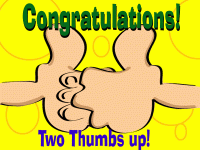
 as usual..... Thanks for sharing, and congrats.
as usual..... Thanks for sharing, and congrats.
